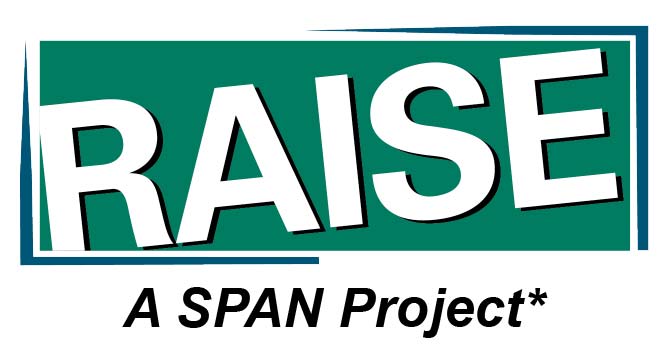Personal Example:
“You seem too smart to have a learning disability.”
“You have to actually think in this class.”
“I have trouble with math too.”
“It’s not hard.”
“You can do X so why can’t you do Y?”
All of these statements have been said to me about my dyscalculia. Dyscalculia is a math and spatial learning disability. For example, it’s not just struggle calculating numbers and math anxiety for many. It’s also distance, time, counting money, directions and more. It can look like focus issues. It can be mixed with other learning disabilities and ADHD. It can also be not remembering names and having a bit of prosopagnosia or facial blindness. It is hard to track.
For me, it started with struggles tying my shoes, reading an analog clock (I still prefer digital), being put on the spot in class to answer a math question and laughing it off, taking all the English classes and none of the math ones, trouble with learning to drive to the extent my tutor asked if I had a learning disability and not knowing I needed accommodations because I was still able to succeed if I worked hard enough. It wasn’t easy to recognize because I made sure no one caught it. I made sure I spent extra hours studying, sometimes waking up at 4am. Yet, everything I learned would eventually fade and not be easily retained. I had trouble not just learning but with long term retention. I got through school because of short term retention which is most often taught. I had enough math in my head to get through high school.
Then, I got to college. I was a Secondary Education English major until I couldn’t take precalculus, one of the requirements. Instead of recognizing I had an issue, I changed my major to English Literature with a Minor in Writing planning to pursue a Masters in Education. All because I had no idea I had dyscalculia. I got tutoring for precalculus but it wasn’t enough. Nothing would have been enough. My brain didn’t know how to add sometimes. It couldn’t keep track of things others could. My brain was neurodivergent but I had no idea for the longest time.
Another invisible disability happened. I developed a mental health crisis of bipolar disorder which led to a mental breakdown. This mental breakdown and relapse years later worsened the learning disability, dyscalculia. Now I can’t do a lot I could do in high school. I was helping a girl I nannied with her math homework in elementary school and was overwhelmed. Yet I did those same things once.
I finally got tested through the Office of Vocational Rehabilitation after I was put on disability for Bipolar. They said I scored extremely low in math. But still no label of “dyscalculia.” It took a Facebook group on dyscalculia to show me what I was experiencing wasn’t all in my head. I became self-diagnosed.
So I started to self-advocate. Once I stopped hiding my dyscalculia, there were misconceptions, insensitivity and ignorance that ran rampant. No one was willing to understand what this meant for me, especially now that a breakdown made everything worse like a brain injury. Because it was invisible, I had trouble convincing therapists that I was having so much trouble. I had to relearn to drive after a few car accidents. I had to figure out how to work again since I had struggles with retention in general and doing some simple tasks if math related. I had to advocate for my limits when so often I was told, “I want you to believe in yourself. You CAN do it.”
Yes, maybe I can do things. But it’s not about willpower. I just can’t do certain things. As Melissa Blake, disability rights activist, said, “I hate the phrase ‘Don’t let your disability stop you.’ It’s an incredibly toxic thing to say to a disabled person. Yes, there are some things I can’t do because of my disability and that’s OK. It doesn’t make me weak or lazy. Stop making disabled people feel bad.”
Invisible disabilities are difficult to advocate for because people don’t see the struggle. They didn’t see me failing. They saw me succeeding. They saw me overcome the education system and then later the mental health system, both very flawed in meeting the needs of those in crisis. They saw me with a great attitude. They saw me happy. They saw me with a good support system. They saw me helping others.
But what they didn’t see was the fact that I still had an invisible disability.
Accepting this about myself has been a lifelong journey. Denial delayed diagnosis, as it so often does. Professionals didn’t know the term, dyscalculia, and those who did, gaslit me into believing I could overcome it. I couldn’t just jump into something new unless I figured out how to get around difficulty learning.
I hyper focused on what I was good at. I became a self-help writer for Forbes, utilizing my Bachelors in English. Since I didn’t want to rush into a job while on disability, I volunteered all the time and advocated for causes. I created my own opportunities.
But I’ll tell you what- just because I found a way around these struggles doesn’t mean I expect others to do the same. I want there to be more help and conversation. I want the world to know that invisible disabilities are there. Education matters.
It’s amazing I went through my life not knowing I had a learning disability or had a mental illness. I found ways to get through things by overworking and developing a machine-like mentality. I couldn’t stop because if I did, I would see that I was overcompensating. This isn’t the solution. My way isn’t the way it should be. It was just the way it had to be due to the limited knowledge and resources at the time. I should have been diagnosed and gotten accommodations. I should have been able to bypass precalculus or get more help in my undergrad and then graduate with my original major. Yet, sometimes, things do work out in our favor. I didn’t end up becoming a high school English teacher. I left the Masters. So I had a BA in English which was much broader. For me, it worked out. It doesn’t always work out. I am lucky. But I have struggled even though I have had things work out. What I want most is validation for my struggles. What I want most is for people to see the unseen- that I am tired. Just tired of doing this – being different from others and trying to overcome rather than accept my disability.
Overtime, my cognitive abilities started to get better. But I will never be the same I was before my mental breakdown. I will never be neurotypical. But I no longer judge myself for this. I no longer say, “It’s my fault that I can’t do this.” Instead, I say, “I am enough.”
And so are you.
What Are Invisible Disabilities?
According to Forbes, “Over 42 million Americans have a severe disability, and 96% of them are unseen.” It is more likely than not that you know someone with an invisible disability if not yourself. That means your attitude towards them and such things matter.
An invisible disability is neurological in nature and largely unseen. The National Education Association says, “These physical, mental, or neurological conditions—known as invisible disabilities—can limit or challenge a person’s movements, senses, or activities, and can impact that person’s ability to learn or work.” In simplistic terms, it’s any disability that isn’t obvious to others.
Northwest Primary Care says “A vast majority of chronic illnesses are invisible. Some examples of invisible illnesses include:
- Allergies and food intolerances
- Arthritis, especially rheumatoid
- Cancer
- Chronic Fatigue Syndrome
- Fibromyalgia
- Depression and mental illness
- Diabetes
- Digestive disorders such as Celiac, colitis, and irritable bowel syndrome (IBS)
- Migraine and headache sufferers
- Heart conditions
- Lupus
- Lyme Disease
- Multiple Sclerosis
- Infertility
- Sjogren’s Syndrome”
Another type, as I mentioned for myself, is mental illness. For me, mental illness impacted my cognitive skills, worsening them through two breakdowns. Sometimes everything connects and it can be hard to navigate.
Misconceptions
Here are some misconceptions of those struggling with invisible disabilities:
- They are faking their disability.
- They are imagining their disability.
- It’s not a real disability.
- There’s no visual sign of a disability like a hearing aid or wheelchair so it’s not as bad.
- It doesn’t impair everyday activities so it doesn’t need treatment.
- They have a great attitude and are very active.
- They’ve been resourceful and innovative so they don’t need accommodations.
- They need to work harder.
- They brought it on themselves.
- The invisible disability is due to a moral failing.
- They are in control of the invisible disability.
- Their invisible disability isn’t severe.
- It’s easy for them to ask for help.
- Their symptoms may come and go so harder to believe if inconsistent.
All. Of. These. Are. FALSE.
These assumptions are what create stigma for those with invisible disabilities.
According to Oxford Languages, stigma is “a mark of disgrace associated with a particular circumstance, quality, or person.” It’s looked down upon. Pitied. Believed to mean that person has lesser value or worth. Stigma is created from ignorance and indifference. The goal of any activist is to tell their story and shed light on how invisible disabilities actually do exist. The ones we should listen to are the ones who experience it. Their interpretation of their experiences is the one that matters most.
Since invisible disabilities are usually hidden, it’s easy for those living with them to maintain a hidden identity. This puts a strain on relationships, work life and overall well-being. Fear drives them to just push through and hide the disability.
If we are open and honest about our struggles, we find common humanity. If we educate people on all disabilities and talk about it, stigma starts to fade. If we own our stories, we have nothing truly to fear. If we validate each other, we can be our authentic selves.
If we can choose to accept that an invisible disability is like any other type of disability, we can get the diagnosis and the help. We can be less distressed and stressed. We can become leaders and true learners. Because wisdom is much more important than the ability to retain a fact. Kindness is the only thing we truly leave behind as our legacy. So be kind. Teach each other how to accept themselves. And know if you have an invisible disability, it’s time to speak up.
Check out what the ADA says about invisible disabilities in the workplace here. Check out other resources on invisible disabilities here.
About the author:
Sarah Jeanne Browne is a speaker, writer, and activist. She is a self help writer who has been published on Forbes, Lifehack, Tiny Buddha, Thrive Global, Elephant Journal, and more. She has led workshops for youth on leadership for The Peal Center, Pennsylvania Youth Leadership Network, and The Woodlands Foundation. Sarah is a “lived experience” speaker and writer with bipolar who fosters better understanding of mental health to end stigma. Sarah promotes how to surrender or let go as her philosophy in all her writing- self help for sites, books, or otherwise. Her website is www.sarahjeannebrowne.com. You can also find her on twitter @sarahjbrowne and facebook @sarahjsocialjustice.

Did you like this article? Are there other topics you’d like to see us publish on? Do you want to apply to be a guest blogger? Please take our quick, 3-question survey and let us know what you think!
Take Survey: http://survey.constantcontact.com/survey/a07eg1rmj5jjrasph9l/start

